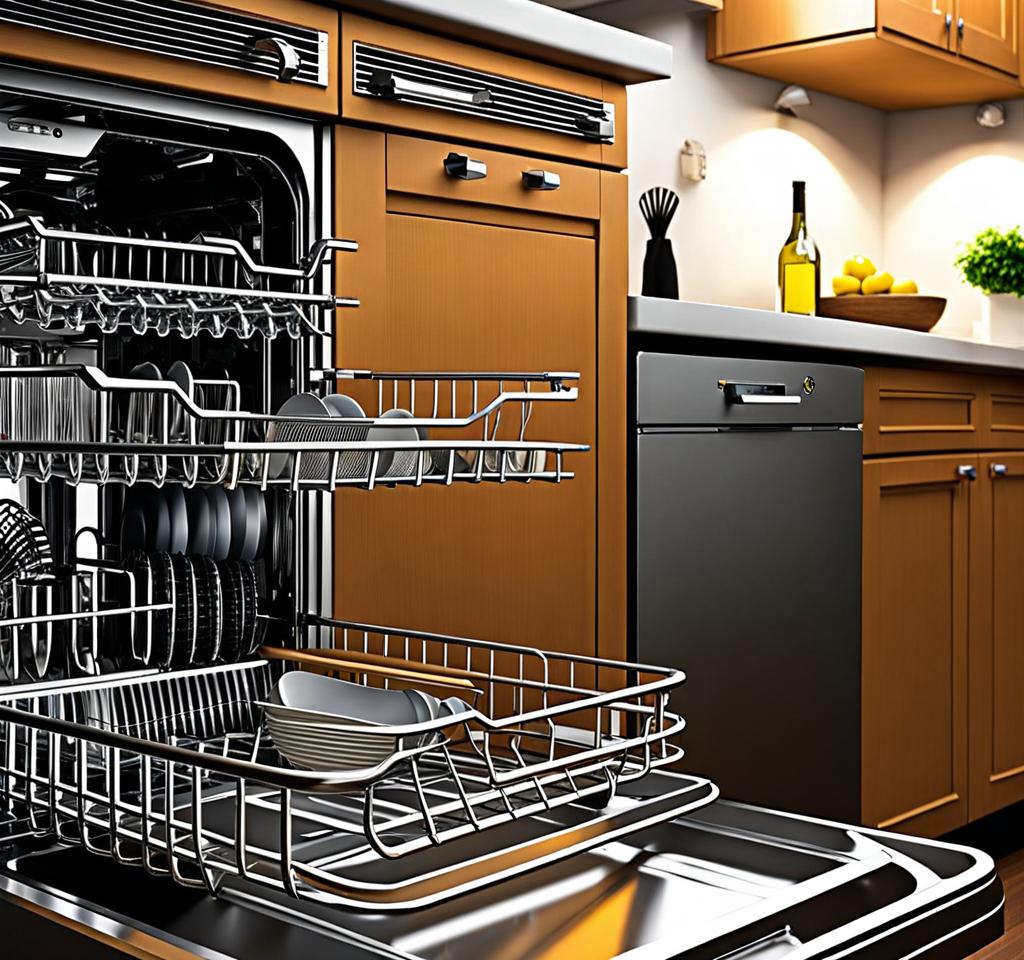Ah, the dreaded moment when your trusty dishwasher refuses to start. You’ve loaded it up, pressed the button, and… nothing. Don’t panic just yet! A dishwasher will not start can often be resolved with a few simple troubleshooting steps. As someone who’s been there, done that, I’m here to share my hard-earned wisdom with you.
Why Won’t My Dishwasher Start? Common Culprits Unveiled
Before we dive into the solutions, let’s first understand the potential reasons why your dishwasher might be throwing a temper tantrum. Here are some of the most common culprits:
- Faulty door latch or switch: If the door isn’t properly closed or the latch is malfunctioning, the dishwasher won’t start for safety reasons.
- Power supply or electrical issues: Sometimes, it’s as simple as a tripped circuit breaker or a loose power cord connection.
- Clogged or malfunctioning drain: If the drain is blocked or not working correctly, water won’t be able to flow out, and the dishwasher will refuse to start a new cycle.
- Broken timer or control board: These are the brains of the operation, and if they’re fried, the dishwasher won’t know what to do.
- Child lock or safety mechanism engaged: If you have little ones running around, they might have accidentally enabled the child lock, preventing the dishwasher from starting.
Troubleshooting Techniques: A Step-by-Step Guide
Now that we’ve identified the potential troublemakers, let’s roll up our sleeves and get to work. Here’s a step-by-step guide to troubleshooting your dishwasher woes:
- Check for error codes and consult the manual: Many dishwashers display error codes that can provide valuable clues about the problem. Consult your owner’s manual to decipher these codes and follow the recommended steps.
- Inspect the door latch and ensure proper closure: Make sure the door is securely closed and the latch is engaged. If the latch seems faulty, try gently cleaning it or replacing it if necessary.
- Test the power supply and reset the dishwasher: First, check if the circuit breaker has tripped or if the power cord is loose. If all seems well, try unplugging the dishwasher for a minute or two, then plug it back in – this can sometimes reset the system and resolve minor glitches.
- Clear drainage hose and filter blockages: Over time, food particles and debris can accumulate, leading to clogs. Carefully remove and clean the drain hose and filter to ensure proper water flow.
- Disengage the child lock or deactivate the safety mode: If you suspect the child lock is engaged, refer to your manual for instructions on how to disable it. Some dishwashers also have a safety mode that prevents the dishwasher from starting if it senses a potential issue.
DIY Dishwasher Repair vs. Professional Service
Depending on the severity of the issue, you might be able to tackle the repair yourself or need to call in the professionals. Here’s a quick guide to help you decide:
- Minor issues suitable for DIY fixes: If it’s a simple problem like a clogged filter or faulty door latch, you might be able to resolve it with a little elbow grease and some basic tools.
- Advanced repairs requiring expert intervention: If the issue seems more complex, like a faulty control board or a leaking pump, it’s probably best to call in a professional appliance repair service. Attempting these repairs yourself could lead to further damage or even safety hazards.
When it comes to the cost, it’s worth considering the potential savings of a DIY repair versus the labor and service fees of a professional. However, if your dishwasher is still under warranty, you might be able to get it repaired or replaced at no additional cost.

Preventing Future Dishwasher Woes
Once you’ve got your dishwasher up and running again, it’s time to implement some preventative measures to avoid future hiccups. Here are a few tips:
- Proper loading and usage techniques: Follow the manufacturer’s guidelines for loading dishes properly, using the right amount of detergent, and selecting the appropriate cycle. Overloading or using too much detergent can lead to clogs and other issues.
- Regular cleaning and maintenance routines: Don’t wait until your dishwasher is on the fritz to give it some TLC. Regularly clean the filter, spray arm, and drainage area to prevent buildup and ensure optimal performance.
- Energy-efficient operation tips: Running your dishwasher only when it’s full and using the appropriate cycle for the load can save energy and extend the lifespan of your appliance.
- Signs it’s time for a replacement: Even with the best care, dishwashers eventually reach the end of their lifespan. Keep an eye out for signs like excessive noise, leaks, or recurring issues, as these could indicate it’s time to start shopping for a new one.
If you’ve decided to bid farewell to your current dishwasher and upgrade to a new one, here are some top-rated models known for their reliability:
- Consumer ratings and expert reviews: Look for models that have consistently high ratings from both consumers and professional reviewers, as this is often a good indicator of quality and performance.
- Energy Star certified and water-saving features: Energy-efficient models not only save you money on utility bills but are also better for the environment.
- Quiet operation and advanced drying options: No one wants a dishwasher that sounds like a jet engine taking off or leaves dishes dripping wet. Look for models with quiet operation and advanced drying features.
- Smart connectivity and custom cycle selections: Some of the newer models offer smart connectivity, allowing you to control and monitor the dishwasher from your smartphone, as well as custom cycle selections tailored to your specific needs.
Remember, while fancy features are nice, reliability and quality should be your top priorities when shopping for a new dishwasher.

This is where you’ll find inspiration to create a stylish and beautiful dream home.